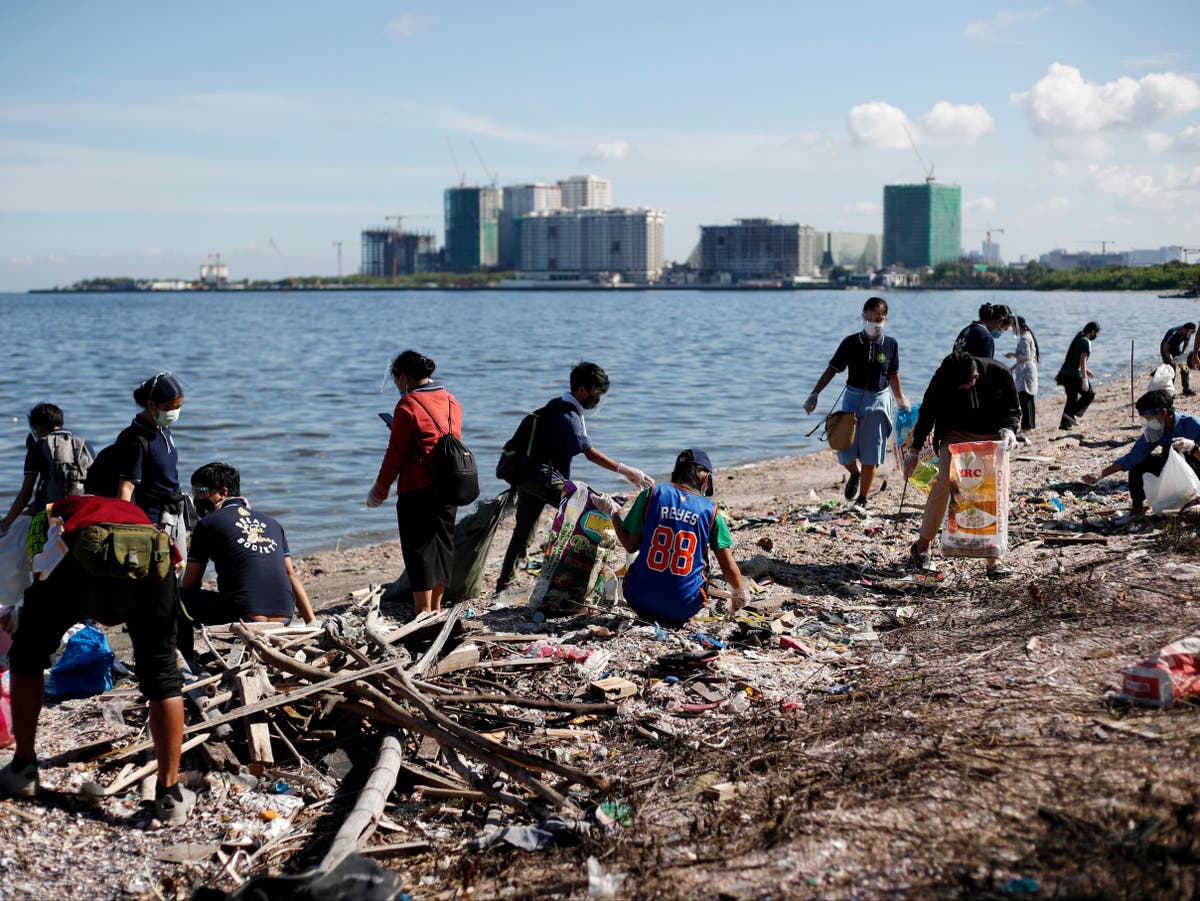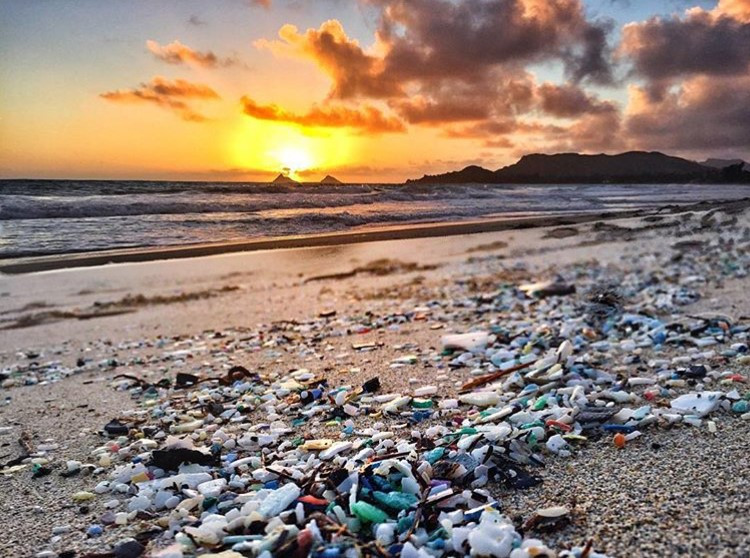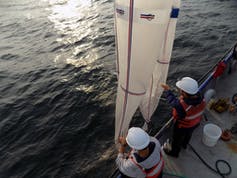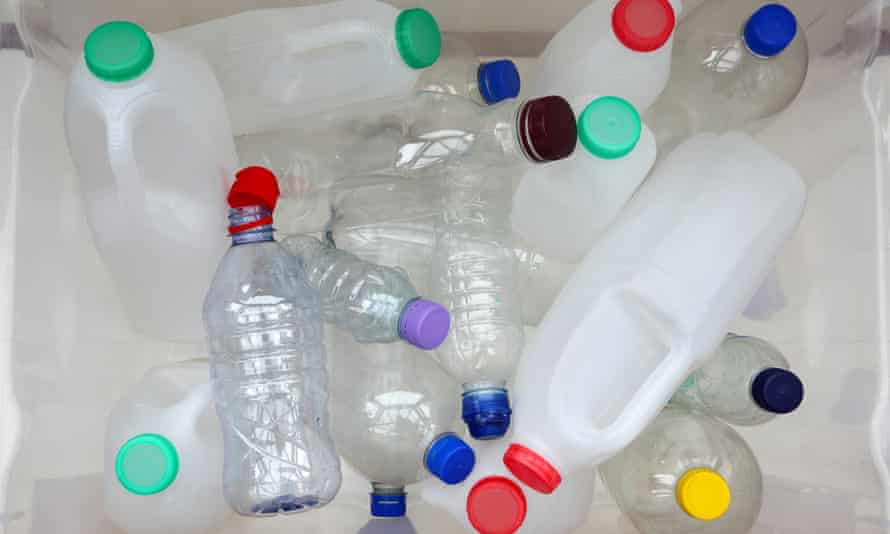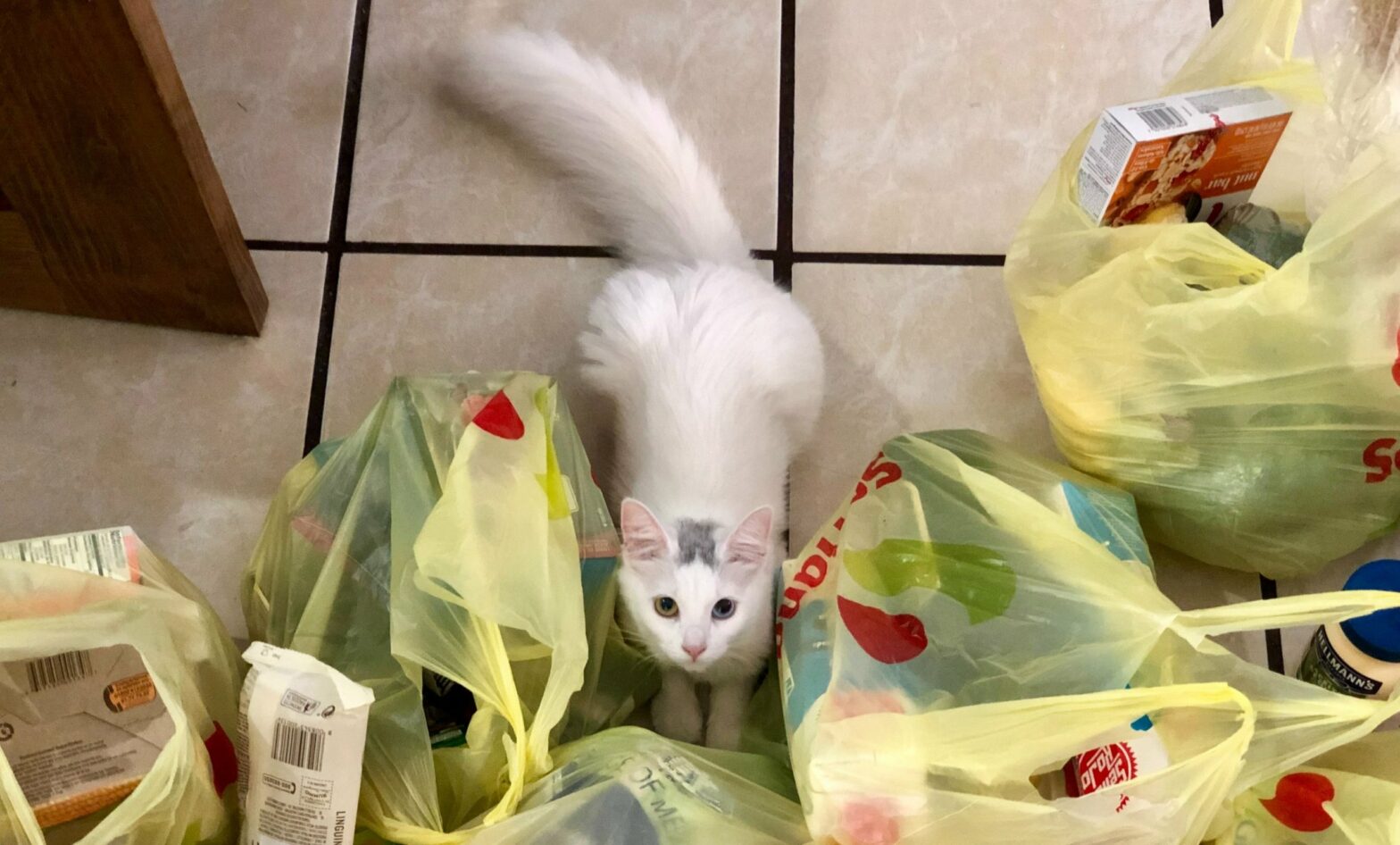The world may be approaching an irreversible tipping point for plastic pollution, a group of scientists is warning, with impacts for both the environment and wider society. In an article published inScience, scientists from Sweden, Norway and Germany wrote that there were “enormous” consequences for continuing to throw away plastics, which continue to be “poorly” recycled.Figures for plastic waste entering the environment by 2025 are in the region of 9 and 23 metric tonnes per year, with warnings that by 2050, the world’s oceans and seas will be filled with more plastic than fish.Most plastics that are thrown away eventually break down into tiny nano-particles through a process known as weathering, but according to the study, that will be impossible at future rates of waste.Matthew MacLeod, the lead author of the study, said in an interview with SciTechDaily that while many countries were recycling, “plastic is deeply ingrained in our society, and it leaks out into the environment everywhere”. Should rates of pollution reach a so-called tipping point, the scientists warn, there will be a collapse of habitats and species loss, and changes to the way in which the ocean removes carbon — which would increase temperatures globally. ”So far, we don’t see widespread evidence of bad consequences, but if weathering plastic triggers a really bad effect we are not likely to be able to reverse it”, said Mr MacLeod of a tipping point. “The cost of ignoring the accumulation of persistent plastic pollution in the environment could be enormous.“The study argued a reduction in plastic is “the rational policy response” for governments.“The rational thing to do is to act as quickly as we can to reduce emissions of plastic to the environment,” Mr MacLeod added.
Category Archives: News
Microplastics reach Lut desert
Microplastics reach Lut desert – Tehran Times
Plastic pollution could pose another danger to our planet
Plastic pollution could be a bigger problem than we realise (Getty)Plastic pollution is now found everywhere on our planet, from the furthest reaches of Antarctica to the depths of the sea. But could plastic pose another danger to Earth – by adding more carbon into natural systems around the planet?Plastic is largely made up of carbon, which is released into the environment when it breaks down – which could have important effects on ecosystems around the world.It could even have an impact on the climate, researchers have warned. Aron Stubbins, a professor of marine and environmental sciences, chemistry and chemical biology, and civil and environmental engineering at Northeastern University, investigated – and says he found “surprising” results. Stubbins said: “It was clear that there were some environments in which plastics are now a significant amount of the carbon. There’s as much plastic-carbon as there is natural carbon in some ecosystems.”Read more: Why economists worry that reversing climate change is hopelessStubbins worked with colleagues to put together a sketch of the global plastic-carbon cycle, and further calculated the amount of carbon that plastics add to the environments that they pollute. Stubbins said: “We’ve added a new material plastic carbon cycle alongside the natural carbon cycle.”So much carbon introduced by plastic pollution into the natural environment could have a ripple effect across life forms, ecosystems, and even the planet’s climate.Read more: A 1988 warning about climate change was mostly rightPlastic production and use began in earnest around 1950. By 1962, Stubbins found, the amount of carbon in plastics that had been created surpassed the total amount in all humans on the planet. By 1994, plastic-sourced carbon topped the amount of the chemical element in all animals. “The plastics are just building up,” he said.Some of the most significant accumulation occurs in the surface waters of subtropical ocean gyres, where currents cycle in just such a way that floating materials accumulate in a sort of patch.Story continuesRead more: Melting snow in Himalayas drives growth of green sea slime visible from spaceIf plastics release carbon into ocean ecosystems, it might alter the climate, Stubbins says. That’s because a thin layer on the surface of the world’s oceans plays an important role in the exchange of material between the ocean and the atmosphere. The aerosols and trace gases involved in that exchange can “change atmospheric chemistry, which can change climate”, he said. “So if there’s this high concentration of plastics in that particular layer at the very surface of the sea, then that could have ramifications for the lower atmosphere.”Watch; Amazing art sculptures created with ocean rubbish
Massive Georgia plant to turn plastic into fuels, chemicals
“We are building an industry that requires us to continue feeding it,” said Jennette Gayer with the group Environment Georgia.The good, the bad and the uglyPlastic has been a blessing and a curse on modern life.It’s light and endlessly malleable. It can be puffed into Styrofoam packing peanuts or formed into a medical device that remains in a body for years. It’s tough enough to store harsh chemicals for decades without breaking down.But the durability that makes it so useful also makes it nearly indestructible without intervention.It takes about 10 grams — less than the weight of two quarters — of polyethylene terephthalate, commonly called PET, to make a half-liter drink bottle. That tiny amount will take anywhere from 70 to 450 years to break down naturally, depending on exposure to sunlight and other factors, according to estimates from a variety of environmental, industrial and scientific groupsCaptionPlastic pollution is a global concern, but there are examples right here in Georgia. Here, trash and plastic pollution cover the banks of the tributary of Proctor Creek in Atlanta. Georgians throw away 1 million tons of plastic each year. Only 9% of total plastic waste in the U.S. gets recycled. BOB ANDRES / BANDRES@AJC.COMRecycling could be the answer to the problem, but it’s complicated for a number of reasons. There are seven categories of plastics that are different on molecular levels. They often can’t be mixed when recycling. And mechanical recycling processes degrade plastic’s composition, limiting its uses.Of the seven categories, only two types of plastics are easily recycled and have ready buyers. There is little market for the rest. So, despite the best intentions of environmentally conscious families, most of the plastics packed into recycling bins are sent to landfills.Another deterrent to recycling is that it has been cheaper to make new plastic.That results in a massive problem. The Environmental Protection Agency estimates the U.S. produced 35.7 million tons of plastic in 2018 — the amount increases each year — but only 9% got recycled. About 5.6 million tons were burned to create energy, releasing greenhouse and toxic gases. And 27 million tons were buried in landfills or ended up in gutters, rivers and oceans.It’s an issue that affects big cities, small towns and the companies whose brands are emblazoned on bottles, Styrofoam beer chests and food wrappers that end up floating from the coves of Lake Lanier to the beaches of Tybee Island. Public pressure and fear of regulation have spurred big users like the Atlanta-based Coca-Cola Company to pledge to find alternatives and to invest in recycling, which so far hasn’t yielded much success.Coke invested $60 million in a South Carolina plant that aimed to recycle one type of plastic, polyethylene terephthalate, into new bottles in 2009. But Coke eventually divested itself of the troubled operation in 2011. Other national and international companies have made similar efforts, most of which produced little or poor results.Good intentions and high tech dreamsBob Powell, a Georgia Tech engineering and MBA graduate, founded Brightmark in 2016 with the idea of doing good and doing well by solving environmental problems for profits.The company and its partners started by designing and operating nine industrial-sized processing facilities from Florida to Washington state that collect cow and chicken farm wastes and turn it into natural gas. The gas is sold into local or regional pipelines, and the processed wastes become fertilizer or compost.The company moved into plastics and built its first processing plant last year in Indiana. It is one-quarter the size of the planned Georgia facility and will take in about 100,000 tons of plastic yearly. The Macon plant, which will be situated on industrial land near Middle Georgia Regional Airport and will employ more than 100 people, will haul in 400,000 tons of plastic from the region and surrounding states annually.Brightmark uses chemical processes to break down plastic. It is one of a growing number of new companies moving into that trail-blazing, high-tech niche. Others are Loop Industries in Canada, Agilyx in the U.S. and Nexus Fuels, a smaller Cobb County firm that is financed in part by Cox Enterprises, the parent company of The Atlanta Journal-Constitution.Brightmark uses a process called pyrolysis — heating plastic wastes in a closed container with no oxygen to vaporize it. It can mix in all types of plastics, solving one of the problems with recycling.“It’s like a fancy distillery,” said Powell.CaptionPlastic items are conveyed to Brightmark machinery that shreds them into thumb-sized pellets, which will be vaporized with high heat then distilled into an oil that can be used to make diesel fuel, naptha and waxes. Brightmark plans to build a massive plastic processing facility outside of Macon.Credit: Courtesy of BrightmarkCredit: Courtesy of BrightmarkThe plastic vapor is condensed into an oil. The oil will be further refined on site into 20 million gallons of wax and 64 million gallons of low-sulfur diesel fuel and naptha, which can be used to make gasoline, solvents or plastic.“I think we are on a journey … and we keep getting better and better,” Powell said. Brightmark’s $460 million Georgia plant will keep millions of tons of plastic from going to landfills while making useful products, he said.While it’s not recycling in the true sense, “that is better than where we are right now,” he said.The oil it makes can be processed into new plastics, but that industry is in its early stages of development in the U.S., and Brightmark does not have a buyer with plans to make plastic. Some European companies are beginning to try that. Mondelez International, the food firm, says it will put Philadelphia brand cream cheese in tubs made of recycled plastic by 2022.Powell said, “When we have a customer, we would like to tell the world publicly that we are going to make plastic out of plastic.”Stephen Adams, executive director of the Macon/Bibb County Industrial Authority, said construction on the plant should begin next year. Powell said it could take two to three years to complete.Brightmark has applied for a permit from the state Environmental Protection Division that will allow it to release emissions — including carbon monoxide, nitrous oxides, volatile organic compounds and other pollutants — that fall within state and federal guidelines.Emissions in Indiana are roughly equal to what a large hospital would release, according to a study Brightmark paid for.Not solving the problemThe California-based environmental group Global Alliance for Incinerator Alternatives criticized the new processes, including pyrolysis in a June 2020 analysis.The processes release toxic chemicals into the air and contribute to greenhouse gases by creating fuels. “Rather than limiting production or contributing to circularity, chemical recycling provides an excuse to increase the production and disposal of plastic,” the report says.In the last decade, companies have failed technologically and economically when they’ve tried to use processes like pyrolysis to make new plastics, it says. Those problems continue into the present.Coke made another attempt to find bottles made from recycled plastic and had a contract with Loop Industries, which planned to make them using a similar method. But Coke walked away from the deal last October.“Loop did not satisfy the production milestone within the agreement, and the decision was made to terminate the framework agreement in 2020,” Coke spokesman Scott Leith told the AJC.Late last year, Loop was hit with class-action lawsuits from investors who allege the company made false or misleading statements about its work and misrepresented the results of Loop’s proprietary process. The Securities and Exchange Commission also launched an investigation into the company.A Loop spokesman told the AJC the company had no comment about the allegations or investigation.Powell said Brightmark already sells all the oil it can produce, though he declined to disclose whether the private company is profitable. It has partners such as oil industry giant BP.Gayer, from Environment Georgia, said, “This chemical recycling is not really a solution to the plastic pollution crisis we are facing, and might be seen as a distraction.”She expressed concerns about the $82 million in incentives that Georgia has promised Brightmark to build here, given the newness of the technology and unproven market.Pat Wilson, the head of the Georgia Department of Economic Development, said Brightmark already has a plant up and running. The department used experts from Georgia universities to vet the industry. Members from the Macon/Bibb County Industrial Authority visited the Indiana plant.“We have really done our due diligence,” he said.“This is a technology that can be transformational in how we deal with this massive problem of plastics in society,” he said.Producing fuels from plastic is marginally better for the environment than simply burying it, said David Shonnard, a Michigan Technological University professor who is researching pyrolysis of plastics.He said it is feasible but optimistic that maybe half of the plastics the U.S. produces could be processed into fuels or new plastics in five years. Big companies are just beginning to scale up, like the $250 million Eastman Chemical plant in Tennessee, which will chemically break down polyethylene terephthalate into building blocks for new plastic. If plants like that are successful, it could spur more plastic recycling.But the final solution is not just a matter of chemistry. The plastics crisis is a “wicked problem,” Shonnard said — a science term used to describe highly complex problems that involve incalculable risks. And addressing it will require examining social policy, the economics and industrial solutions.Time will tell whether Brightmark and similar ventures will fulfill their promises and the fledgling industry takes wing.“Probably the market is waiting to see whether those are successful or not,” Shonnard said.CaptionJulian Gindi, perched on a fallen tree, empties out a plastic bottle before bagging it up with other trash he and his buddies collected along the banks of the Chattahoochee River.Credit: Joey Ivansco/AJCCredit: Joey Ivansco/AJC
Hawaii's plastic epidemic continues with the pandemic
HONOLULU (KHON2) — Plastic trash continues to litter our beaches and ocean. Local environmental groups say they’re concerned the pandemic is making plastic pollution more of a problem, despite City efforts to reduce single-use plastics.
According to the Kokua Hawaii Foundation, 70% of ocean plastic waste comes from land.
“Just by virtue of how they’re designed they only get used for 10 minutes and then they’re disposed of,” Kokua Hawaii Foundation’s Jennifer Milholen said. “The way that our waste collection systems are set up and our behaviors a lot of those materials end up in the marine environment, they end up in the land.”
The first phase of Honolulu’s ban on single-use plastic utensils and bags went into effect on April 1, but early fears about surface contamination during COVID-19 led to an increase in single-use plastics for foods, condiments and bento boxes.
What you need to know about the new plastics ban
“There’s been definitely a huge increase in the dependence of single-use plastics and the perception that is the most effective way to be safe and healthy, but I think what the science continues to show over time and what the CDC has recently confirmed is that surface transmission has not and is not a real danger for transmission,” Milholen continued.
More people have also been ordering take-out from their favorite restaurants.
“A lot of them are seeing a five or six-fold increase in what they were spending in food service takeout and disposable containers,” he said.
According to the CDC, generally, the chances of someone contracting COVID after touching an infected surface is 1 in 10,000.
Experts say if you want to make a positive impact on the environment while protecting yourself from getting sick, remember to bring your reusables with you.
“Always remember to bring your reusable bag. I have a reusable straw that I have inside of a utensil set and that utensil allows me to refuse any form of reusable utensils,” Shin said.
On a grander scale, both Milholen and Shin are operating a pilot program as Hawaii’s first full cycle reusable takeout program, funded by a NOAA marine grant. They provide washing stations along with containers that customer can bring back to participating Haleiwa restaurants.
The restaurants are Haleiwa Joes, Cosmic Kitchen, Rajanee Thai and Cholo’s.
“Our big goal is to make it scalable. We want to show that our pilot is something that can be scaled up across Hawaii’s 4,000 restaurants, and eventually statewide,” Milholen said.
The ocean is full of tiny plastic particles – we found a way to track them with satellites
Plastic is the most common type of debris floating in the world’s oceans. Waves and sunlight break much of it down into smaller particles called microplastics – fragments less than 5 millimeters across, roughly the size of a sesame seed.
To understand how microplastic pollution is affecting the ocean, scientists need to know how much is there and where it is accumulating. Most data on microplastic concentrations comes from commercial and research ships that tow plankton nets – long, cone-shaped nets with very fine mesh designed for collecting marine microorganisms.
But net trawling can sample only small areas and may be underestimating true plastic concentrations. Except in the North Atlantic and North Pacific gyres – large zones where ocean currents rotate, collecting floating debris – scientists have done very little sampling for microplastics. And there is scant information about how these particles’ concentrations vary over time.
Researchers deploy plankton sampling nets in Lake Michigan.
NOAA, CC BY-SA
To address these questions, University of Michigan research assistant Madeline Evans and I developed a new way to detect microplastic concentrations from space using NASA’s Cyclone Global Navigation Satellite System. CYGNSS is a network of eight microsatellites that was launched in 2016 to help scientists predict hurricanes by analyzing tropical wind speeds. They measure how wind roughens the ocean’s surface – an indicator that we realized could also be used to detect and track large quantities of microplastics.
Looking for smooth zones
Annual global production of plastic has increased every year since the 1950s, reaching 359 million metric tons in 2018. Much of it ends up in open, uncontrolled landfills, where it can wash into river drainage zones and ultimately into the world’s oceans.
Researchers first documented plastic debris in the oceans in the 1970s. Today, it accounts for an estimated 80% to 85% of marine litter.
The radars on CYGNSS satellites are designed to measure winds over the ocean indirectly by measuring how they roughen the water’s surface. We knew that when there is a lot of material floating in the water, winds don’t roughen it as much. So we tried computing how much smoother measurements indicated the surface was than it should have been if winds of the same speed were blowing across clear water.
This anomaly – the “missing roughness” – turns out to be highly correlated with the concentration of microplastics near the ocean surface. Put another way, areas where surface waters appear to be unusually smooth frequently contain high concentrations of microplastics. The smoothness could be caused by the microplastics themselves, or possibly by something else that’s associated with them.
By combining all the measurements made by CYGNSS satellites as they orbit around the world, we can create global time-lapse images of ocean microplastic concentrations. Our images readily identify the Great Pacific Garbage Patch and secondary regions of high microplastic concentration in the North Atlantic and the southern oceans.
Tracking microplastic flows over time
Since CYGNSS tracks wind speeds constantly, it lets us see how microplastic concentrations change over time. By animating a year’s worth of images, we revealed seasonal variations that were not previously known.
[embedded content]
This animation shows how satellite data can be used to track where microplastics enter the water, how they move and where they tend to collect.
We found that global microplastic concentrations tend to peak in the North Atlantic and Pacific during the Northern Hemisphere’s summer months. June and July, for example, are the peak months for the Great Pacific Garbage Patch.
Concentrations in the Southern Hemisphere peak during its summer months of January and February. Lower concentrations during the winter in both hemispheres are likely due to a combination of stronger currents that break up microplastic plumes and increased vertical mixing – the exchange between surface and deeper water – that transports some of the microplastic down below the surface.
This approach can also target smaller regions over shorter periods of time. For example, we examined episodic outflow events from the mouths of the China’s Yangtze and Qiantang rivers where they empty into the East China Sea. These events may have been associated with increases in industrial production activity, or with increases in the rate at which managers allowed the rivers to flow through dams.
These images show microplastic concentrations (number of particles per square kilometer) at the mouths of the Yangtze and Qiantang rivers where they empty in to the East China Sea. (A) Average density year-round; (B) short-lived burst of particles from the Qiantang River; (C and D) short-lived bursts from the Yangtze River.
Evans and Ruf, 2021., CC BY
Better targeting for cleanups
Our research has several potential uses. Private organizations, such as The Ocean Cleanup, a nonprofit in The Netherlands, and Clewat, a Finnish company specializing in clean technology, use specially outfitted ships to collect, recycle and dispose of marine litter and debris. We have begun conversations with both groups and hope eventually to help them deploy their fleets more effectively.
Our spaceborne imagery may also be used to validate and improve numerical prediction models that attempt to track how microplastics move through the oceans using ocean circulation patterns. Scholars are developing several such models.
A solar-powered barge that filters plastic out of water, designed by Dutch NGO The Ocean Cleanup, deployed in the Rio Ozama, Dominican Republic, in 2020.
The Ocean Cleanup, CC BY
While the ocean roughness anomalies that we observed correlate strongly with microplastic concentrations, our estimates of concentration are based on the correlations that we observed, not on a known physical relationship between floating microplastics and ocean roughness. It could be that the roughness anomalies are caused by something else that is also correlated with the presence of microplastics.
One possibility is surfactants on the ocean surface. These liquid chemical compounds, which are widely used in detergents and other products, move through the oceans in ways similar to microplastics, and they also have a damping effect on wind-driven ocean roughening.
Further study is needed to identify how the smooth areas that we identified occur, and if they are caused indirectly by surfactants, to better understand exactly how their transport mechanisms are related to those of microplastics. But I hope this research can be part of a fundamental change in tracking and managing microplastic pollution.
[The Conversation’s science, health and technology editors pick their favorite stories. Weekly on Wednesdays.]
Toxic ‘forever chemicals’ are contaminating plastic food containers
Pollution Toxic ‘forever chemicals’ are contaminating plastic food containers Harmful PFAS chemicals are being used to hold food, drink and cosmetics, with unknown consequences for human health Tom Perkins Fri 9 Jul 2021 06.00 EDT Many of the world’s plastic containers and bottles are contaminated with toxic PFAS, and new data suggests that it’s probably …
Continue reading “Toxic ‘forever chemicals’ are contaminating plastic food containers”
Waste plastic deluge could soon prove irreversible
The waste plastic deluge fouling the world’s beaches could be more than just an eyesore. It could be a toxic timebomb.
LONDON, 8 July, 2021 − European researchers have warned that the wave of pollution engulfing the globe could be nearing a tipping point. The waste plastic deluge could become an irreversible crisis.
Somewhere between 9 and 23 million tonnes of polymers get into the rivers, lakes and seas of the world every year. Even more may be getting into the terrestrial soils and by 2025 − unless the world changes its ways − these levels of pollution will have doubled.
And, the researchers warn, the uncertain and as yet unknown effects of weathering on such volumes of plastic could bring what has been called “a global toxicity debt” as drinking bottles, bits of fishing gear, coffee cups and carrier bags become covered with microbial life; as plastic particles foul the sea’s surface, become suspended in the water column, and build up in the sediments of the ocean.
Plastic waste has now been found everywhere: on the world’s highest mountains, in the deepest oceanic trenches, on the beaches of desolate islands in the Southern Ocean, in the Arctic ice, and in the tissues of living creatures, from seabirds to whales.
Worsening climate crisis
“Right now we are loading up the environment with increasing amounts of poorly reversible plastic pollution. So far we don’t see widespread evidence of bad consequences but if weathering plastic triggers a really bad effect we are not likely to be able to reverse it,” said Matthew Macleod of Stockholm University in Sweden.
“The cost of ignoring the accumulation of persistent plastic pollution in the environment could be enormous. The rational thing to do is act as quickly as we can to reduce emissions of plastic into the environment.”
Professor Macleod and colleagues warn in the journal Science that alongside threats to wildlife, and the potential hazard of environmental poisoning, there could be a number of other hypothetical consequences.
Plastic pollutants could exacerbate climate change by disrupting the traffic of carbon between the natural world and the atmosphere, and they could heighten biodiversity loss in the already over-fished oceans.
Researchers do not yet know of the long-term non-toxicological effects of plastic pollution on carbon and nutrient cycles, soil and sediment fertility, and biodiversity. Nor has there been any assessment of the potential for delayed toxic effects as the plastic polymers are altered by weathering.
“The rational thing to do is act as quickly as we can to reduce emissions of plastic into the environment”
And if there are such effects, then they could persist, to trigger what the scientists call a “tipping point”, long after people have stopped discarding plastic waste into the environment.
“The world promotes technological solutions for recycling and to remove plastic from the environment. As consumers, we believe that when we properly separate our plastic trash, all of it will magically be recycled,” said Mine Tekman, of the Alfred Wegener Institute in Germany, and a co-author.
“Technologically, recycling of plastic has many limitations, and countries that have good infrastructures have been exporting their plastic waste to countries with worse facilities. Reducing emissions requires drastic actions, like capping the production of virgin plastic to increase the value of recycled plastic, and banning the export of plastic waste unless it is to a country with better recycling.”
And her colleague Annika Jahnke of the Helmholtz Centre for Environmental Research in Germany warned: “In remote environments, plastic debris cannot be removed by cleanups, and weathering of large plastic items will inevitably result in the generation of large numbers of micro- and nano-plastic particles as well as leaching of chemicals that were intentionally added to the plastic and other chemicals that break off the plastic polymer backbone.
“So, plastic in the environment is a constantly moving target of increasing complexity and mobility. Where it accumulates and what effects it may cause are challenging or maybe even impossible to predict.” − Climate News Network
Research finds microplastics spread across whole Bay of Plenty moana
SuppliedA microplastic fragment found in a shellfish in Bay of Plenty. The fragment came from a single-use plastic.Microplastics have been found in extremely high levels across the Bay of Plenty moana. Tiny plastic particles have been found in shellfish and sediment. University of Waikato master of science student Anita Lewis found the particles in every sediment sample she took from across the region, between Tauranga Harbour and the eastern coast to Maketu and Ōpōtiki. There was not one area sampled where microplastics were not present and particularly high levels were found in shellfish, including tuatua, cockles and wedge shells. These findings come a week after the Government announced plans to ban some single-use plastic products, such as plates, bags, cotton buds and drinking straws by 2025. READ MORE:* Plummeting crayfish numbers in small marine reserves leads to call for more protection in Hauraki Gulf* Kiwis possibly breathing in tiny pieces of plastic after particles found in air* Plastic in our drinking water could spread disease, World Health Organisation warns* We eat a ‘credit card’ size worth of plastic each weekRNZBottle-fed babies are ingesting millions of tiny microplastic particles a day. Lewis said her research findings were alarming, illustrating the impact plastics were having not only on our marine environment, but potentially human health. “Kaimoana gathering in New Zealand is common practice and this research is showing microplastics and nano-plastics are now bioaccumulating in our food chain.” The highest number of plastics in Macomona (wedge shells) was about 1.1 particles per gram of sample tissue in the Tuapiro Point and Maketu Estuary. Elevated levels were also found in Waipapa Bay cockles with 1.2 particles per gram of tissue and Matakana Island tuatua with 2.3 particles per gram of tissue.SuppliedUniversity of Waikato Master of science student Anita Lewis’s work is one of only three pieces of research undertaken on microplastics in New Zealand. “That’s a lot if you take it per gram of tissue.” She said banning single use plastics was an important step, but more advancements were needed particularly for fibre plastics. “What we wear is synthetic and it’s actually made of plastic, so those fibres shed in our washing machines and then they go to the waste water treatment plant, which only catch macro plastics. “Microplastics slip through the membranes… and due to abrasion exit in the treated water as more nano plastics than microplastics.SuppliedA microplastic fibre. In her sediment study she found that fragments, such as plastic bags and earbuds – that the Government wants to ban – only makes up 23 per cent of plastic pollution whereas fibres make up 75 per cent. Tuatua fibres made up 52 per cent of plastic pollution and in cockles 50 per cent. “Fibres are really the biggest problem. “There needs to be some serious changes in water treatment plants and washing machines.” Lewis’ findings will be presented to the New Zealand Marine Society Conference at Waikato University’s Tauranga campus on Thursday.
Stuart Landesberg: Plastic is killing our planet. Will the consumer packaged goods industry step up?
The companies that make packaged household goods, from dish soap to shampoo, have been complicit in creating a society addicted to single-use plastic. But it doesn’t have to stay that way.
[Source Photo: allanswart/iStock]
By STUART LANDESBERG 4 minute

